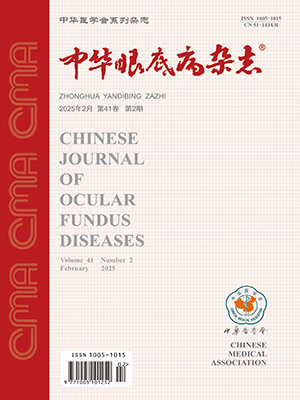ObjectiveTo observe the features of the manifestations of fundus fluorescein angiography (FFA) in multiple sclerosis (MS) and their value in clinical diagnosis.MethodsThe clinical data of 42 patients (84 eyes) with MS diagnosed by magnetic resonance imaging (MRI) and examination of cerebrospinal fluid (CSF) were retrospectively analyzed. The clinical data included visual acuity, ocular fundus examined by direct ophthalmoscope after mydriasis, FFA, visual field, CSF,visual evoked potential (VEP) and MRI examination.ResultsIn 42 patients (84 eyes),the positive detectable rate of examination of direct ophthalmoscope, CSF, visual field, VEP, and MRI was 36.9%, 21.4%, 71.4%, and 83.3% respectively. Abnormal results of FFA were found in 44 eyes (52.38%), including papillitis in 4 eyes(4.76%)at the early stage with extended physiological scotoma and central scotoma; neuroretinitis in 7 eyes (8.33%)at the medium stage with central or para-central scotoma; optic atrophy in 33 eyes(39.29%) at the late stage with centripetal constriction and even tubular visual field. ConclusionThe main angiographic features of MS are papillitis, neuroretinitis and optic atrophy. The manifestations of FFA combined with the results of examination of CSF,visual field, VEP and MRI is helpful for comprehensive and exact diagnosis of MS.(Chin J Ocul Fundus Dis, 2005,21:300-302)
Citation: KUANG Lihui,YANG Weizhong,JIN Min,et al.. Analysis of manifestation of fundus fluorescein angiography in multile sclerosis. Chinese Journal of Ocular Fundus Diseases, 2005, 21(5): 300-302. doi: Copy
Copyright © the editorial department of Chinese Journal of Ocular Fundus Diseases of West China Medical Publisher. All rights reserved




